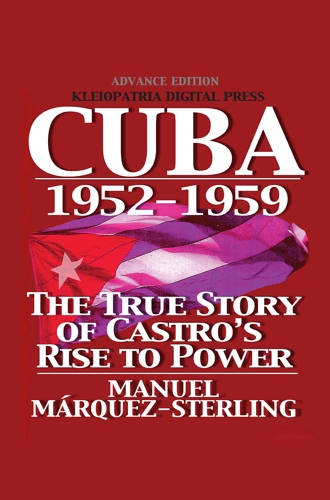April 13, 1952
Upon restoration of Bill of Rights freedoms, the CMQ National Broadcasting Company resumed broadcasting its popular television program Ante la Prensa, Cuba's equivalent to Meet the Press. Its first guest was Carlos Márquez-Sterling, former President of the Constitutional Convention of 1940. Deploring and condemning Batista’s coup, Márquez-Sterling urged the nation to resolve the political crisis through peaceful political channels conducive to a compromise that preserved the Constitution.
Batista’s political opposition split into two camps: the electoralists seeking to engage the regime and forge political solutions, and the revolutionaries and abstencionistas bent on overthrowing Batista by violent methods with the slogan: “Hay que castigar a Batista” ["Batista must be punished."] The lines within the new regime mirrored those of the opposition: a faction in favor of building bridges to the opposition, and the tanquistas opposed to any overtures or concessions.
There was a third short-lived opposition group that sought to remove Batista through judicial means, filing a case with the Supreme Court. This effort was led by the widely respected Revolutionary War veteran Don Cosme de la Torriente, with legal support from attorney and law professor Ramón Zaydin y Márquez-Sterling. This was a long and unsuccessful endeavor, finally coming to trial over a year later. Zaydin argued the case on a fateful day for Cuba, 26 July 1953, the day Castro through his Moncada Attack brought public attention to the revolutionary violence path.
based on Manuel Márquez-Sterling's Cuba 1952-1959 and
Cuba 1952-1959 Interactive Timeline
Cuba 1952-1959 Interactive Timeline


 Mobile subscription
Mobile subscription



No comments:
Post a Comment